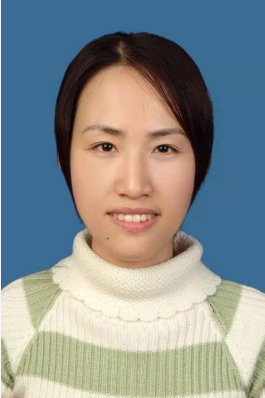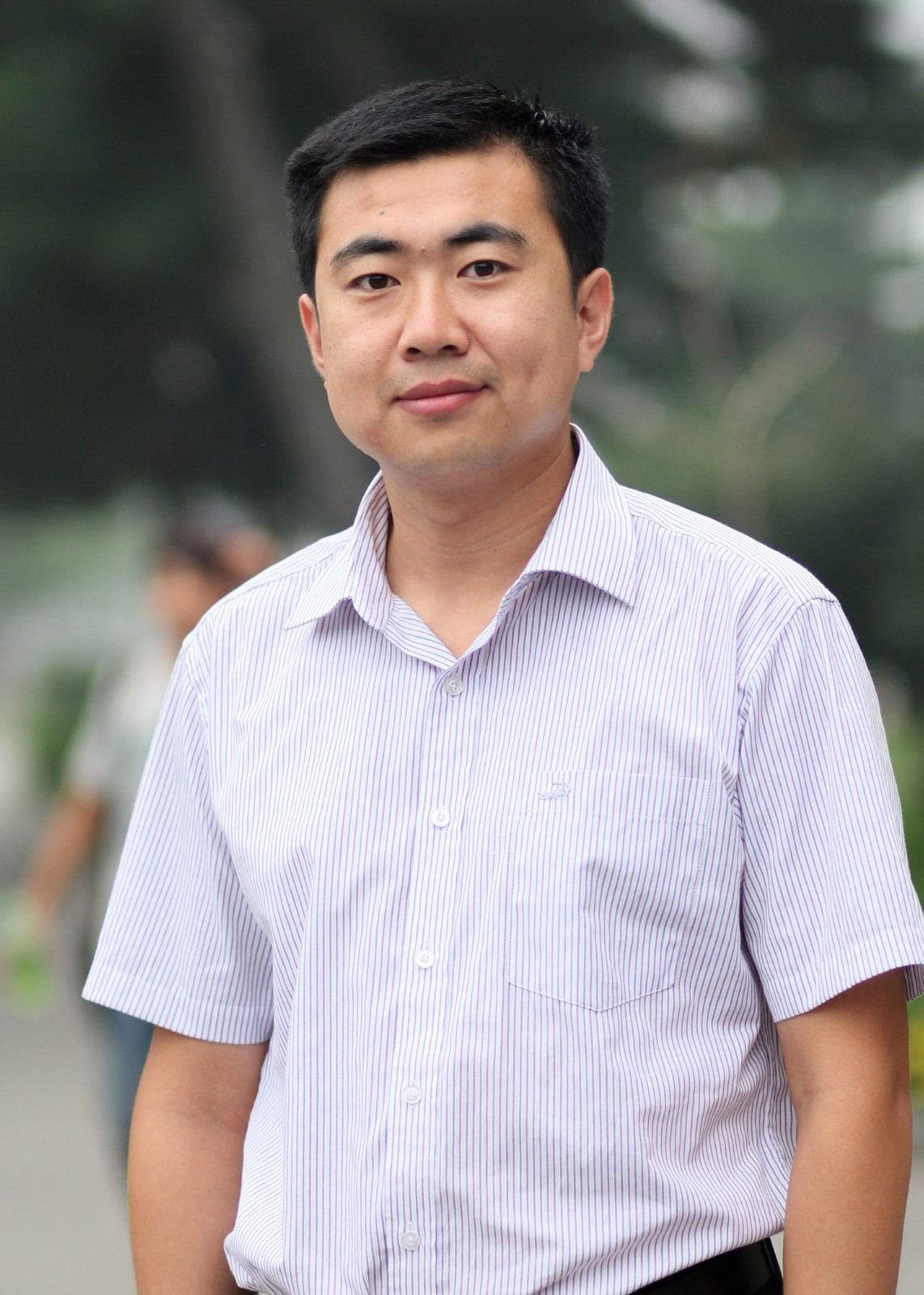
Speakers
SPEAKERS |
Speakers
Prof. Liwei Liu Dalian Jiaotong University, China | Profile: Liu Liwei, Professor, Doctor of Science, tutor of master graduate student,, currently serves as the Dean of the School of Science at Dalian Jiaotong University, Vice Chairman of the Dalian Mathematics Society, Expert in Degree and Graduate Education Evaluation and Monitoring of the Ministry of Education, and Expert in Evaluation of High tech Enterprises in Dalian. Mainly engaged in bioinformatics research, including protein target prediction, circRNA-protein interaction prediction, etc. Currently, more than 30 academic papers have been published. Research Area: Mathematics, computer science and technology, software engineering, computer technology Website: http://www.djtu.edu.cn/teacher/269.html 题目:基于多模态深度学习的药物靶标结合亲和力和结合区域预测框架 摘要:药物-靶标结合亲和力(DTA)的预测在药物开发和潜在药物靶点的识别中起着至关重要的作用。近年来,计算机辅助DTA预测已成为该领域的重要方法。然而现有的数据驱动的学习方法通常基于药物和蛋白质的一维序列特征进行DTA预测并且对具体的结合位点了解不够清晰,目前对计算药物设计的影响很小。为此,我们提出了一种称为MMD-DTA的多模态深度学习框架,用于预测药物-靶点结合亲和力和结合区域。该模型在预测药物-靶标结合亲和力的同时通过无监督学习的方式学习药物-靶标相互作用的结合区域。该模型利用图神经网络和靶标结构特征提取网络从药物和靶点的序列、结构中提取多模态信息,并利用特征交互和融合模块生成用于预测DTA的相互作用描述符和用于预测结合区域的相互作用强度。实验结果表明,基于关键评估指标,MMD-DTA优于现有模型。药物靶标结合区预测的可视化展示了MMD-DTA的可解释性,为药物分子与蛋白质相互作用的功能区域提供了有价值的见解。 |
Prof. Cangzhi Jia Dalian Maritime University, China | Profile: Cangzhi Jia, professor, master's supervisor. Her research mainly focuses on the design of RNA interference related dsRNAs, recognition of liquid-liquid phase separated proteins, and their functions. She has published more than 30 papers on Briefings in Bioinformatics, Bioinformatics, and so on, and obtained two projects of the National Natural Science Foundation of China. Moreover, she guided graduate students to receive provincial and school excellent papers. Research Area: Bioinformatics, Data Mining, Combinatorial Mathematics Website: https://science.dlmu.edu.cn/jiazangzhi.pdf Title:Deep learning in recognizing general and species-specific bacterial promoters 摘要:启动子是DNA序列的一个区域,它定义了RNA聚合酶启动基因转录的起始位置,通常位于TSS的近端,如何正确识别基因TSS和核心启动子对于我们理解基因转录调控至关重要。计算技术作为传统实验方法的补充,是必要的生物信息学工具,具有简单、易操作的特点,可以有效地应用于注释启动子功能和生理的作用。本次报告中,我将介绍我们利用深度学习的方法对真核生物的启动子进行识别,并进一步考虑三种特定类型的真核生物启动子,即具有TATA-box元件的启动子序列(TATA模型),不具有TATA-box元件的启动子序列(Non-TATA模型)和类型不加区分的启动子序列(TATA & Non-TATA模型)。此外,还将分享一些经验和对该领域未来潜在研究方向的思考。 |
Prof. Xiaoqi Zheng Shanghai Jiao Tong University, China | Profile: Dr. Xiaoqi Zheng obtained his Ph.D. of Applied Mathematics from Dalian University of Technology in 2009. He then worked in Department of Mathematics of Shanghai Normal University, and prompted to full professor in 2017. In the end of 2022, he joined in School of Public health, Shanghai Jiao Tong University School of Medicine, and served as Bioinformatics Core Director in Center for Single-Cell Omics. Dr. Zheng’s research interests include developing bioinformatics/statistical methods for high-throughput sequencing data, and bio-medical data analyses using deep learning based Artificial Intelligent methods.郑小琪,2009年博士毕业于大连理工大学应用数学系,现任上海交通大学公共卫生学院教授,单细胞组学与疾病研究中心生物信息学平台主任,主要从事生物统计和生物信息学领域的研究,在Genome Biology, Nucleic Acids Research, PLoS Computational Biology, Bioinformatics等杂志上发表论文60余篇。主持上海市人才发展基金、国家自然科学基金等项目多项。 Research Area: Single-cell transcriptome and spatial transcriptome data analysis, DNA methylation-based analysis of tumor heterogeneity, Artificial intelligence methods in biomedical research (including statistical learning and deep learning) Website: https://www.shsmu.edu.cn/sph/info/1131/2438.htm 题目:空间转录组数据的模拟和降维算法 摘要:空间转录组测序可以在得到基因表达谱数据的同时获取细胞的空间位置信息,为细胞异质性的研究提供了有力工具。近年来,已有上百个空间转录组数据分析的工具开发出来,涉及空间域识别、去噪、细胞通讯、解卷积等。然而由于目前“金标准”空间转录组数据数量较少,且多样性和准确性不足,对这些算法进行有效评估是一个富有挑战的课题。为此,我们提出了一个空间转录组数据的模拟算法Spider,该方法通过细胞类型的比例和转移矩阵控制其空间排布模式。通过批量模拟退火算法(BSA),Spider可以在5分钟内生成100万个细胞的空间转录组数据,并支持空间转录组数据的交互式生成。此外,我们对现有的空间转录组数据模拟算法进行了总结和比较,并将其纳入到统一的Spider框架中。 空间转录组数据的降维也是进行下游分析的一个关键步骤,我们在主成分分析的框架下综合考虑到空间位点的距离信息和基因表达相关性,提出了空间转录组数据的降维算法GraphPCA,其运行速度快,并在多种下游数据分析任务中表现出较好的性能。 |
Prof. Qi Zhao University of Science and Technology Liaoning, China | Profile: I received my Bachelor degree and PhD from Wuhan University and Chinese Academy of Sciences in 2005 and 2011, respectively. Since 2011, I have been a faculty member as a lecturer, associate professor in Liaoning University, China. Now I am full professor in University of Science and Technology Liaoning. During recent years, I have published 46 SCI journal papers in the fields of computational biology, bioinformatics, nonlinear dynamics and systems biology, such as Bioinformatics, RNA Biology, Molecular Therapy-Nucleic Acids, Frontiers in Genetics, IEEE Transactions on NanoBioscience, Briefings in Bioinformatics, Cell Death& Disease, Molecular BioSystems, BMC Systems Biology. I'm Associate Editor for Frontiers in Microbiology and Journal of Cellular and Molecular Medicine, Editorial Board Member of Scientific Reports, Current Protein & Peptide Science and PLOS ONE, guest editors of Frontiers in Microbiology, Current Medicinal Chemistry, Current Topics in Medicinal Chemistry, and Protein & Peptide Letters. I am also PC member of BIBM 2020, BIBM 2019, ICIC 2019, ICIC 2018. 赵琪,辽宁科技大学计算机与软件工程学院教授,博士生导师,理学博士,厦门大学博士后。美国密歇根州立大学数学系联合培养博士,以色列特拉维夫大学、意大利国际理论物理中心及爱尔兰都柏林大学爱尔兰系统生物学研究所访问学者,国科温州研究院客座教授。研究方向:生物信息学,机器学习,人工智能,计算毒理学,健康医疗大数据等。发表第一或通讯作者SCI检索论文65篇。截至目前论文被引用3267次,h指数30。2020年作为第三完成人获得中国自动化学会自然科学奖二等奖。辽宁省百千万人才工程万人层次,沈阳市拔尖人才,中国计算机学会高级会员。担任十余个SCI期刊的副主编或编委。 Research Area: Bioinformatics, Intelligent Computing Methods and Big Data Analytics, Statistical Mining of Biomedical Big Data Website: https://www.ustl.edu.cn/dxxy/info/1077/3287.htm 题目:基于图神经网络和特征融合的药物性肝损伤预测研究 摘要:药物诱导性肝损伤(Drug-Induced Liver Injury,DILI)是药物研发和临床治疗中的重要问题,因其可能导致肝功能失常或损害,甚至导致肝衰竭或死亡。DILI具有许多致病因素,其中有大部分致病因素仍不被完全理解。因此,药物研发的初期阶段必须制定预测和评估DILI风险的方法和工具。本研究提出了DMFPGA,一种新颖的深度学习预测模型,用于预测DILI。为了全面描述分子的特性,本研究采用了多头图形注意机制从分子图中提取特征,表征化合物原子节点水平的特征。此外,本研究结合了多种分子指纹捕捉化合物的分子水平特征。通过融合分子指纹和图形特征,能更充分地表示化合物的特性。随后,使用全连接神经网络将化合物分类为DILI阳性或DILI阴性。为了对DMFPGA的性能进行严格评估,本研究进行了5折交叉验证实验。实验结果表明,本研究的方法优于四种现有最先进的计算方法,平均AUC值为0.935,平均ACC值为0.934。我们相信DMFPGA对药物研发的早期DILI预测和评估具有指导作用。 |
Prof. Gang Fang Guangzhou University, China | Profile: Prof. Gang Fang is with the Institute of Computational Science and Technology, Guangzhou University. He is the executive director of the Specialized Committee on Biocomputing and Bioinformatics Processing of the Chinese Institute of Electronics, M.S. He graduated from Huazhong University of Science and Technology (HUST) with a Ph.D. degree in 2006. His research interests include bioinformatics, biocomputing, synthetic biology and medical data processing. His research interests include bioinformatics, synthetic biology, and medical data processing. In the past three years, he has published more than 20 papers in important journals and conferences at home and abroad, including more than 10 papers in SCI and EI CD-ROM search. He has obtained two software copyrights and served as a reviewer for several national and international journals. He has served as a peer reviewer for the projects of National Natural Science Foundation of China, Shaanxi Province and Xi'an Municipal Natural Science Foundation of China, etc. In 2008, he was awarded the Second Prize of Natural Science of Ministry of Education of China (Research on Intelligent Computing Methods in Network Structure and Optimization, 7th Completer). Research Area:Bioinformatics, Biocomputing, Synthetic Biology and Medical Data Processing Website: https://www.remove.bg/zh Title:Integrated Algorithm for Designing Oligodeoxynucleotides for Gene Synthesis Abstract: Design and construction of large synthetic genes can be a slow, difficult and confusing process, especially in the key step of oligodeoxynucleotides design. Herein we present an integrated algorithm to design oligonucleotide sets for gene synthesis by both ligase chain reaction (LCR) and polymerase chain reaction (PCR). It offers much flexibility with no constraints on gene to be synthesized. Firstly, it divides the long input DNA sequence by a greedy algorithm based on the length of oligodeoxynucleotides overlap region. Secondly, it tunes the length of overlap region iteratively in attempt to minimize the melting temperatures variance of overlap. Thirdly, a depth-first search algorithm is used to achieve uniform melting temperatures of oligodeoxynucleotide overlaps. Finally, the oligodeoxynucleotides with homologous melting temperature necessary for LCR-based or two-step assembly PCR-based synthesis of the desired gene are outputted. |




